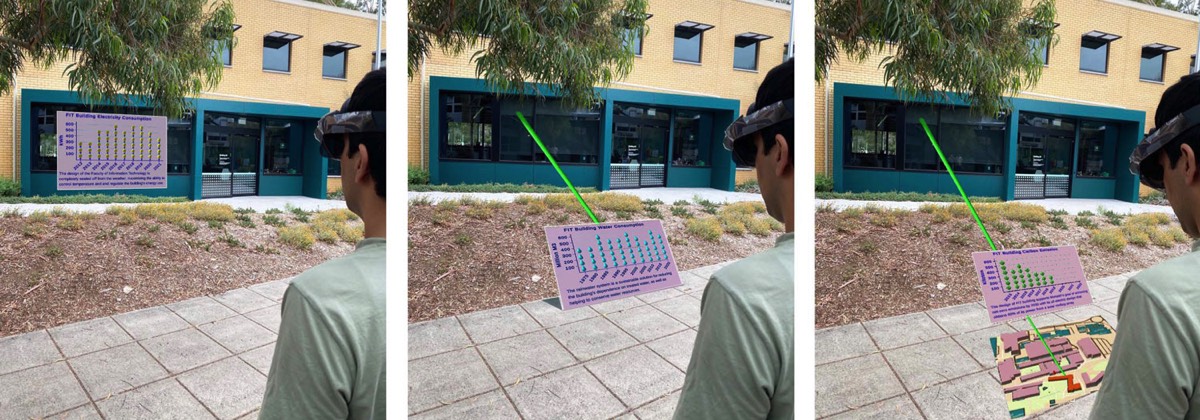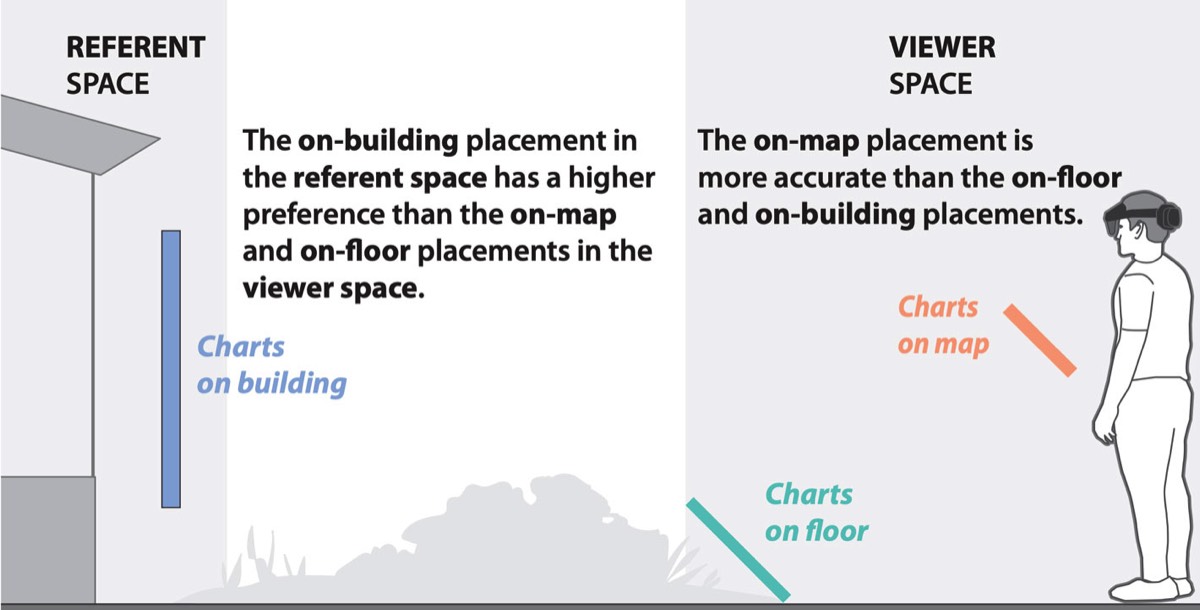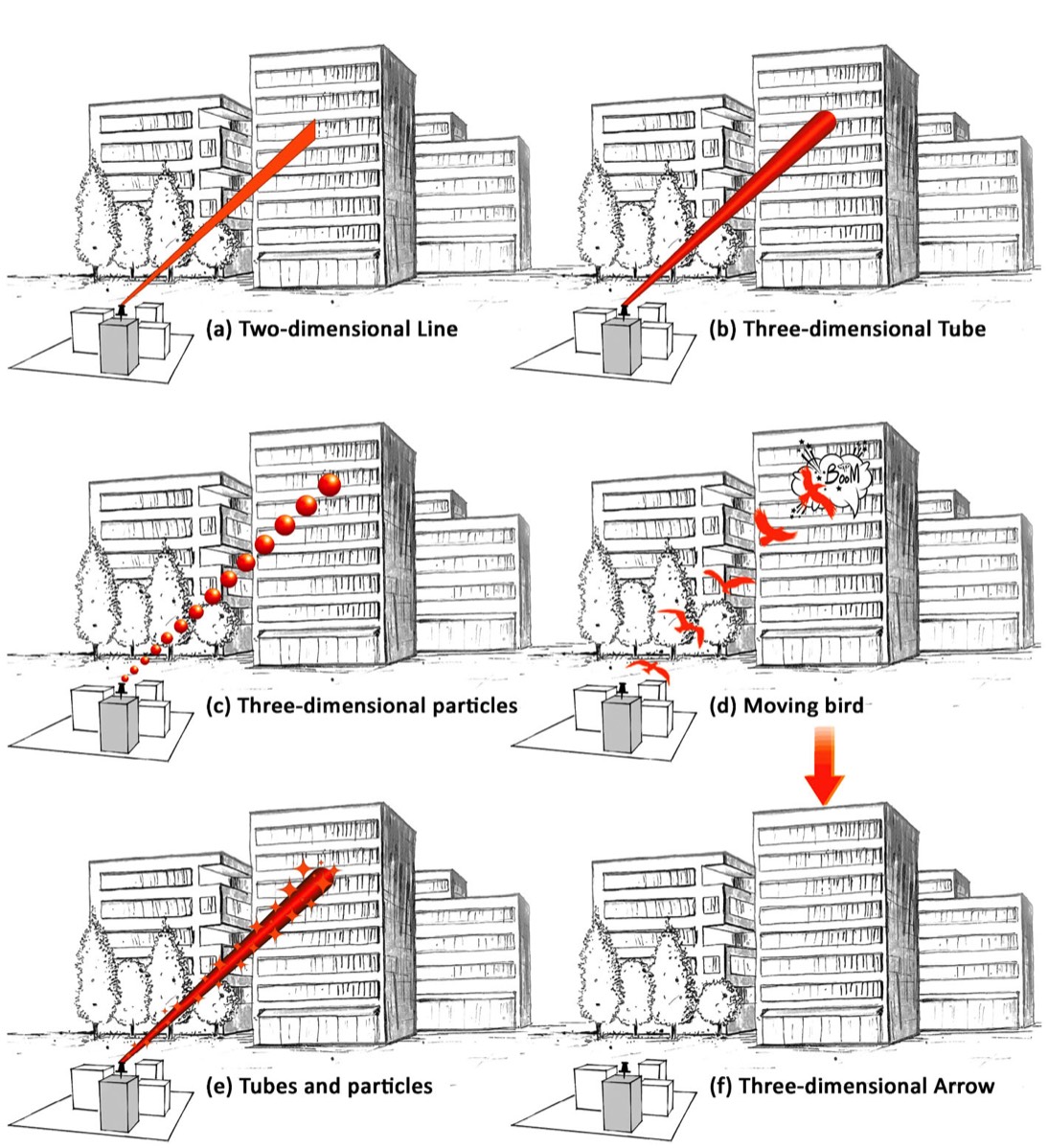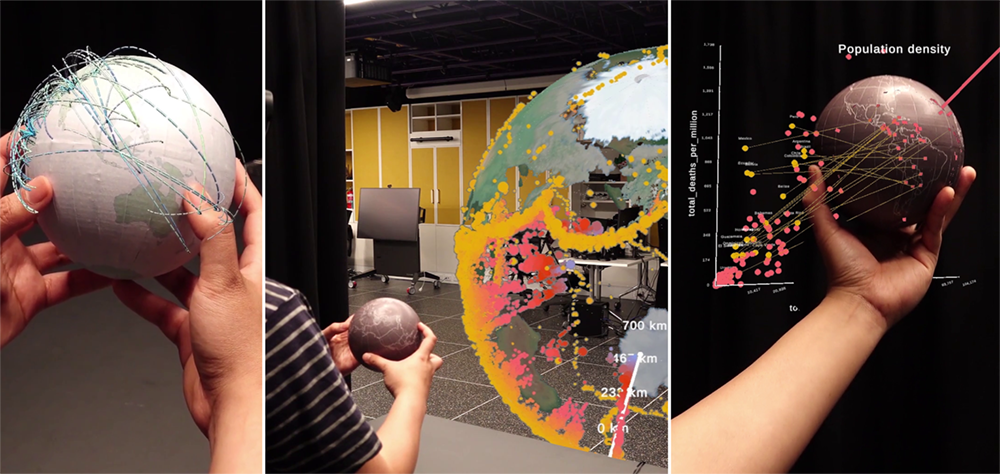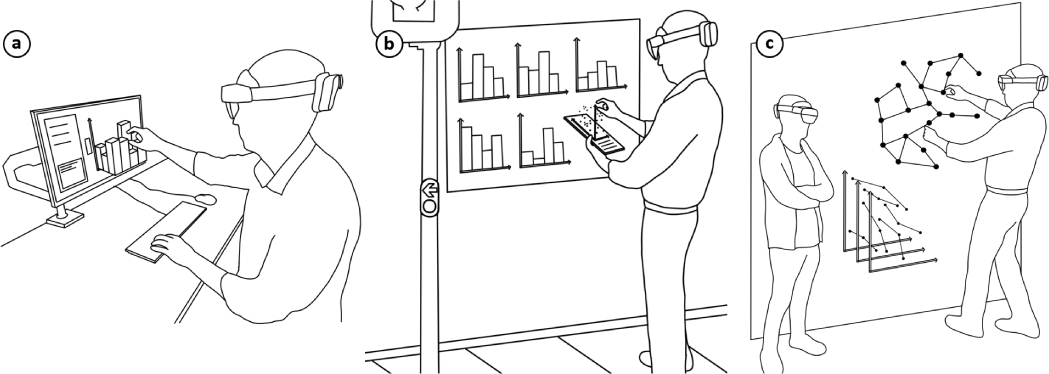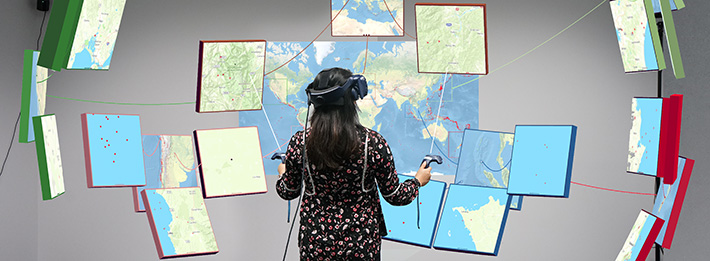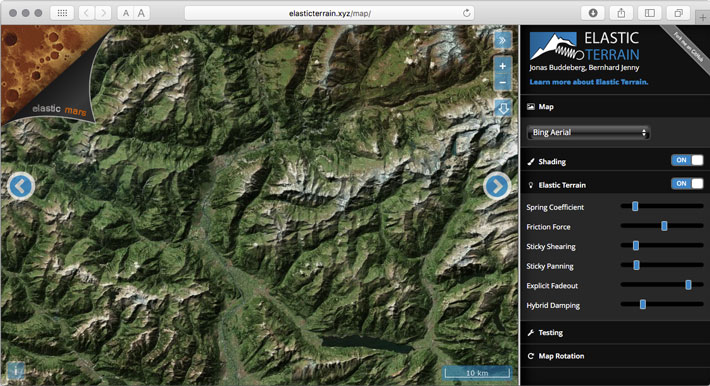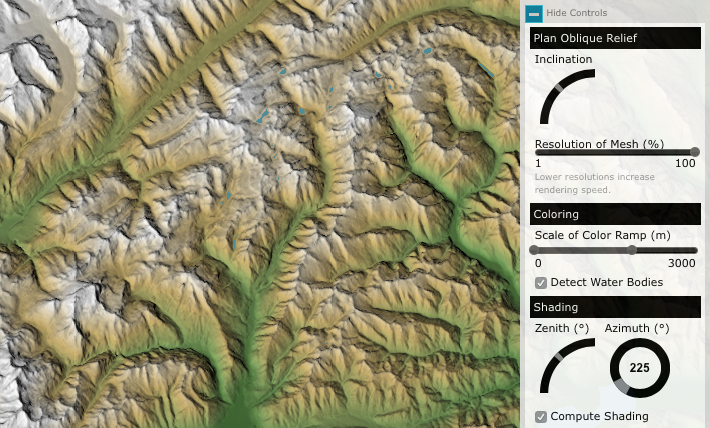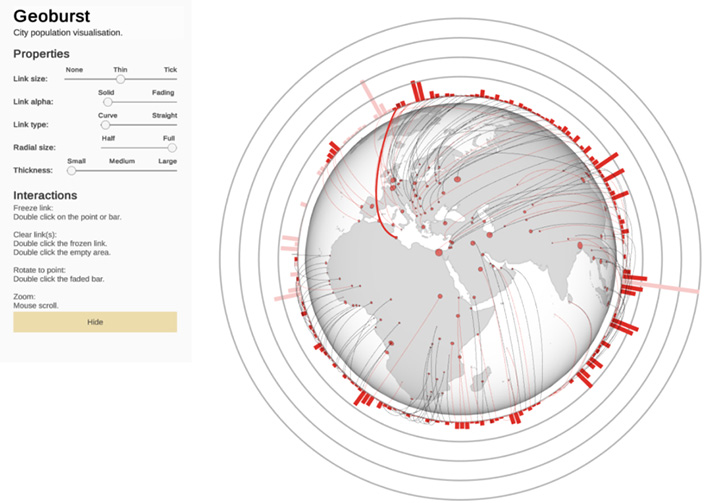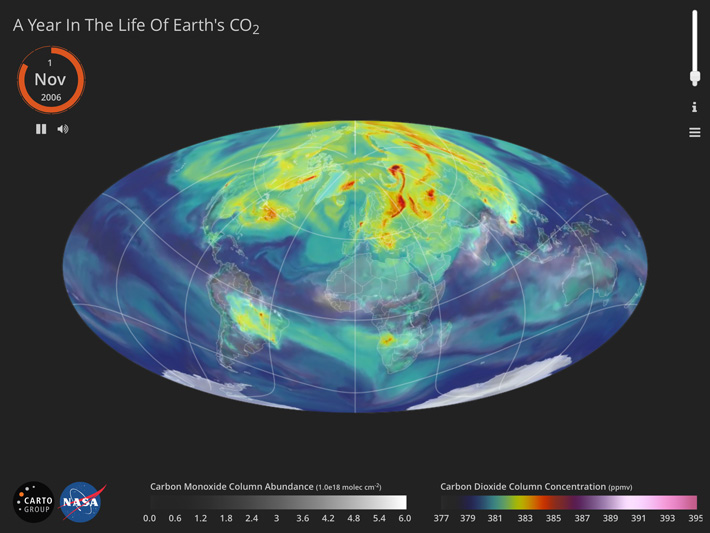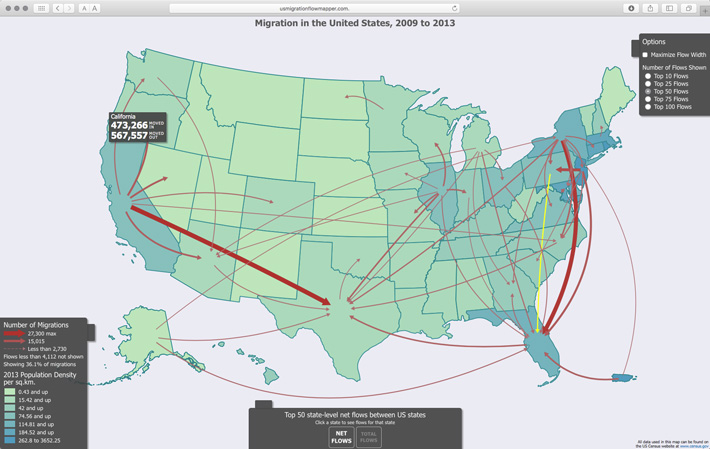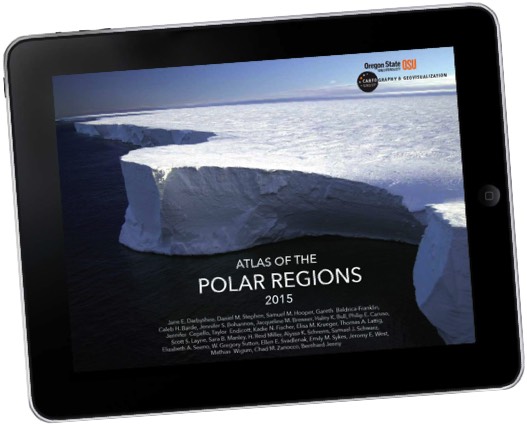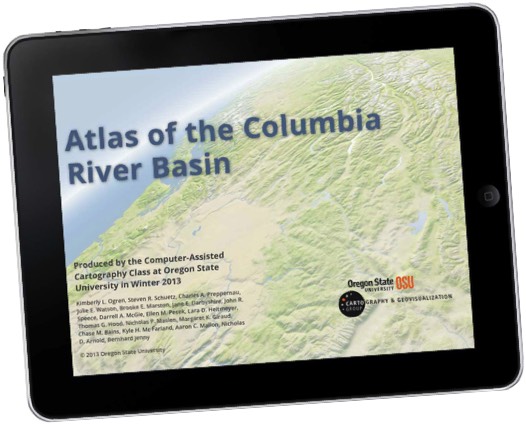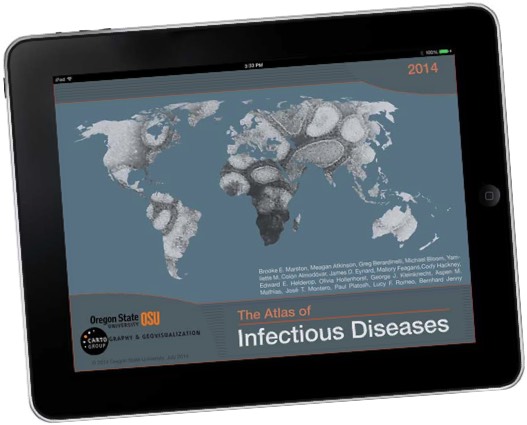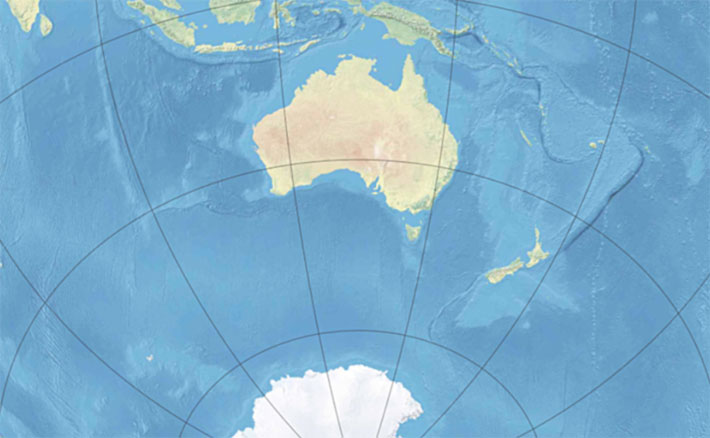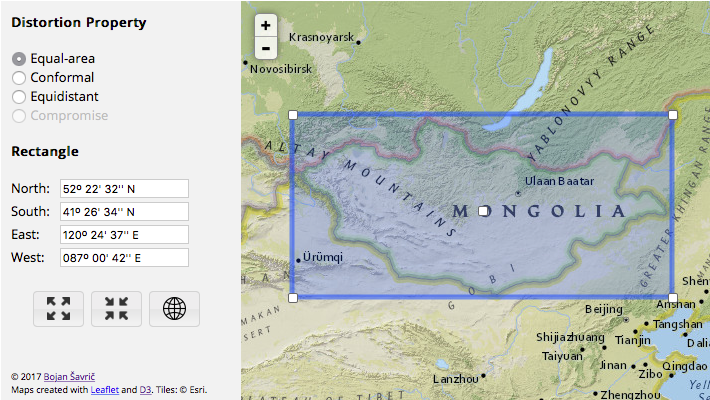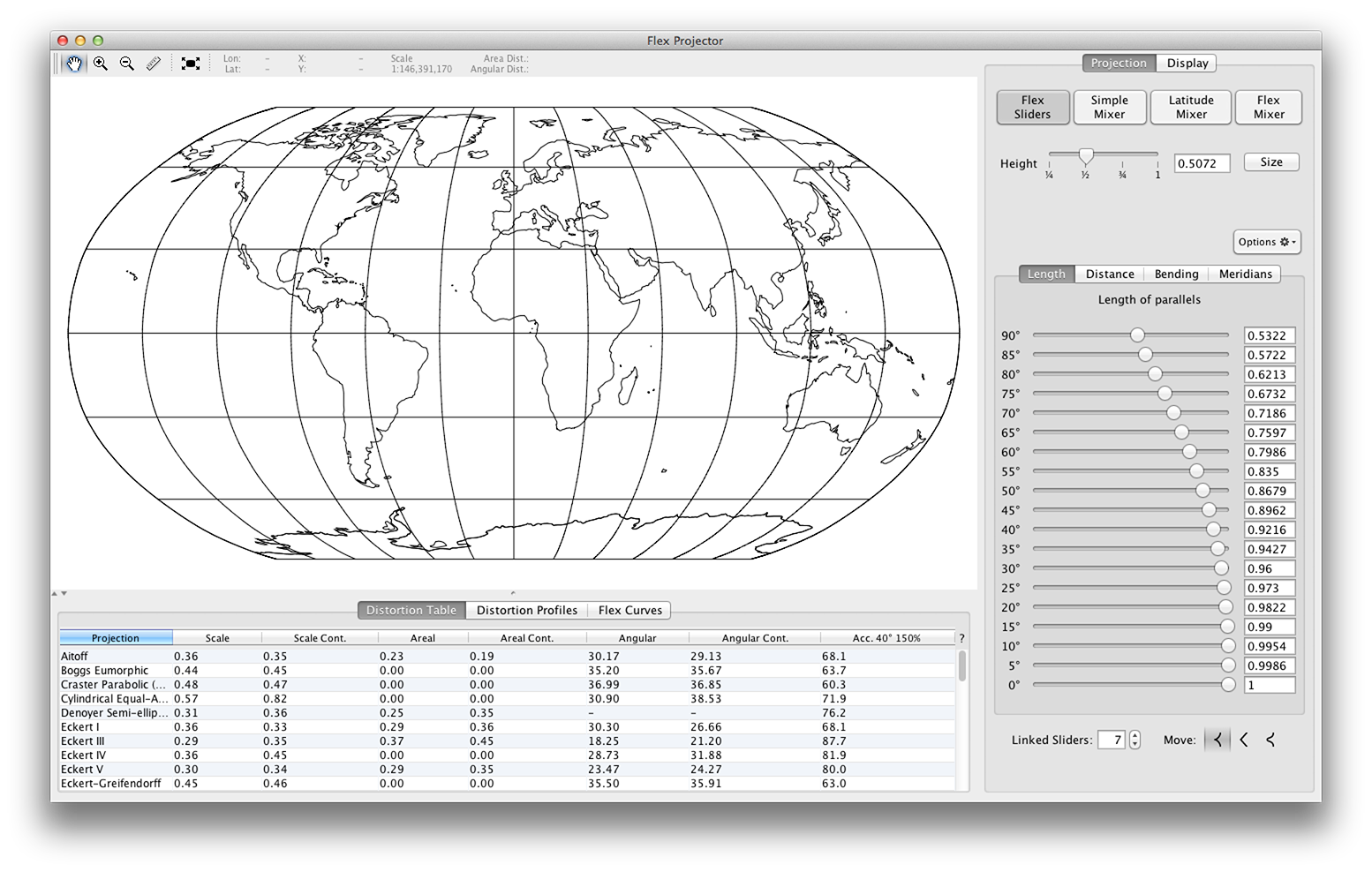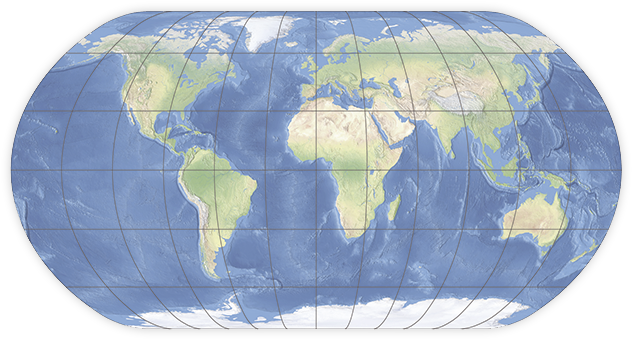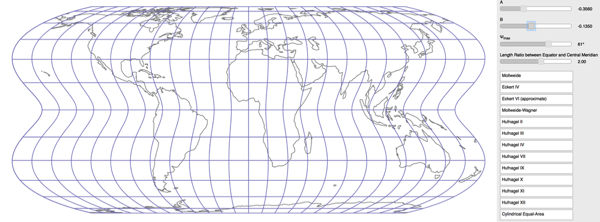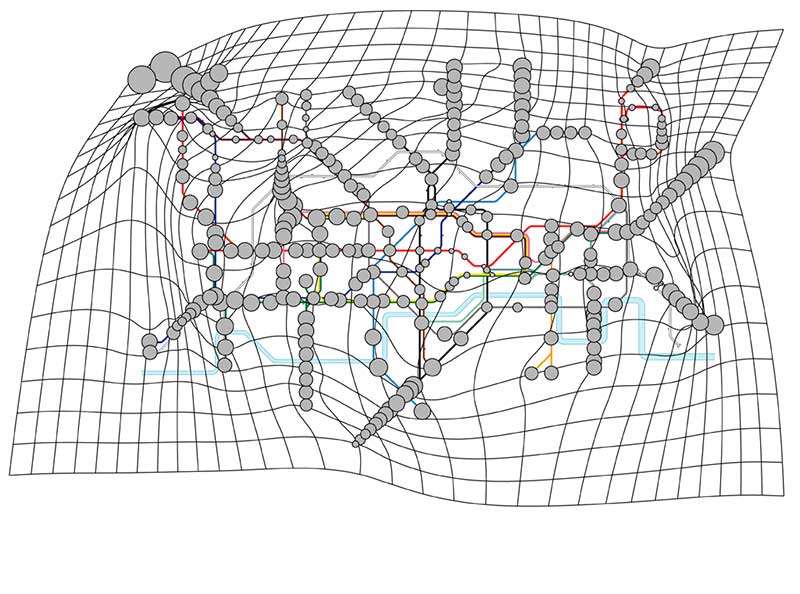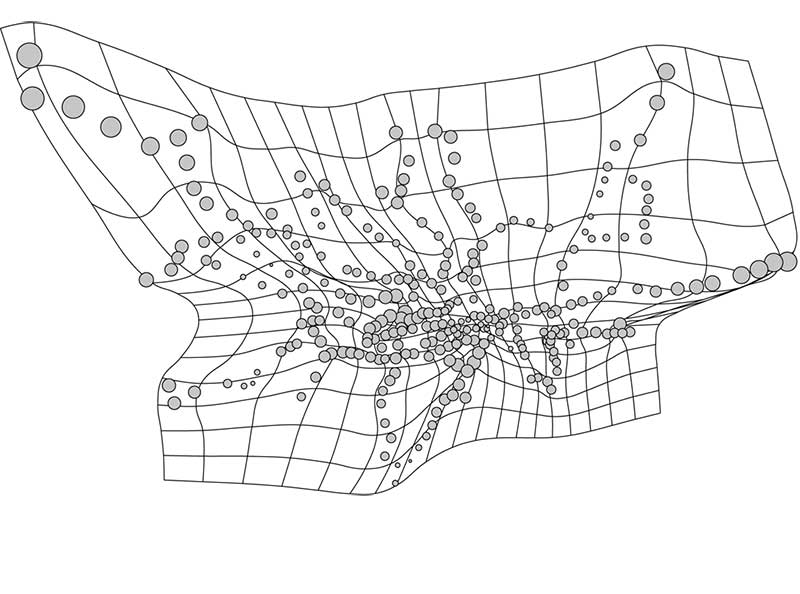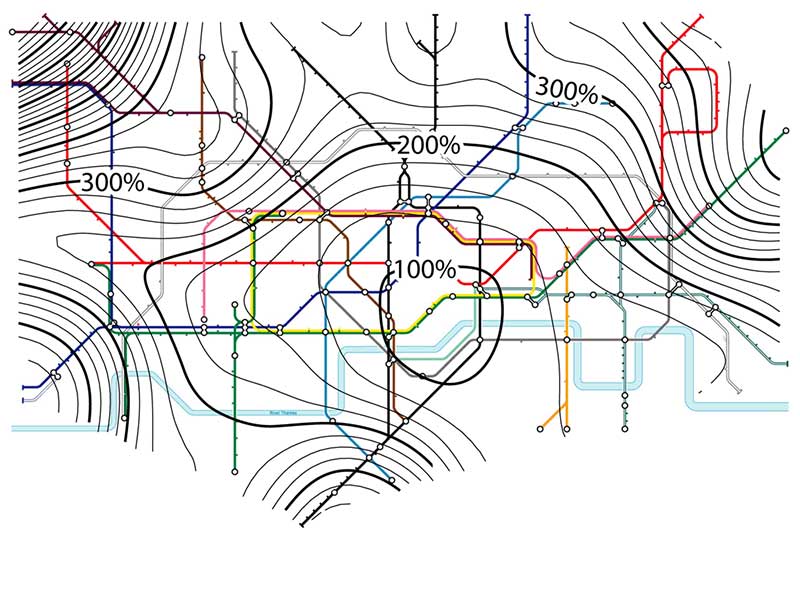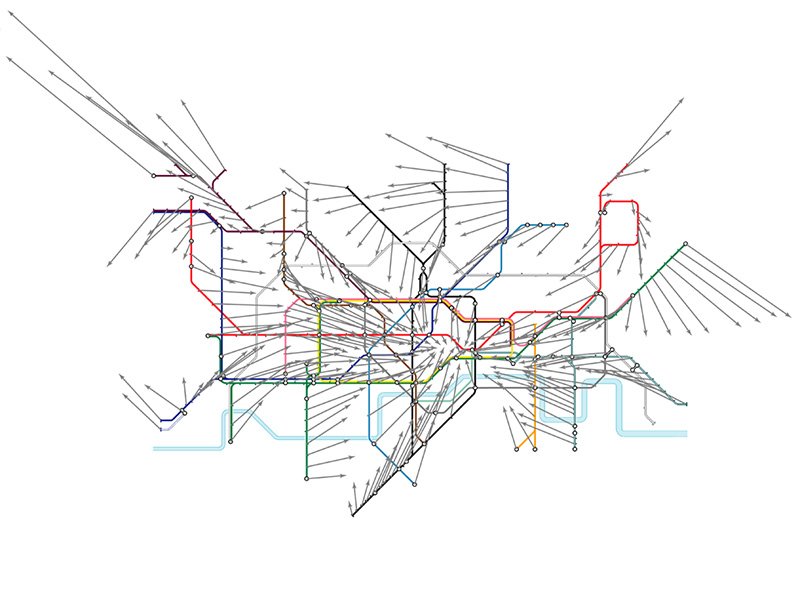Bernie Jenny
I am an Associate Professor at Monash University, Melbourne. My research focuses on cartographic maps and globes. I explore augmented reality and virtual reality for visualising and understanding spatial data, and I apply machine learning to visualising terrain in maps.
Embodied Visualisation Lab
Faculty of Information Technology
Monash University, Melbourne, Australia
bernie.jenny@monash.edu
Immersive Geovisualisation
Visualization Placement for Outdoor Augmented Data Tours
Tangible Globes for Data Visualisation in Augmented Reality
A Design Space For Data Visualisation Transformations Between 2D And 3D In Mixed-Reality Environments
Extrusion of a shortest path in a spatial network.
Matrix extrusion creates juxtaposed views from a single attached 2D scatterplot by grabbing the top-right corner.
Proxemic Maps for Immersive Visualisation
Transforming map geometry with proximity to the user

Proxemic map transition from a horizontal to a vertical map. The map rotates from a horizontal orientation to a vertical orientation as the distance increases.
Virtual Ecology
Exploring Australian landscape dynamics in virtual reality
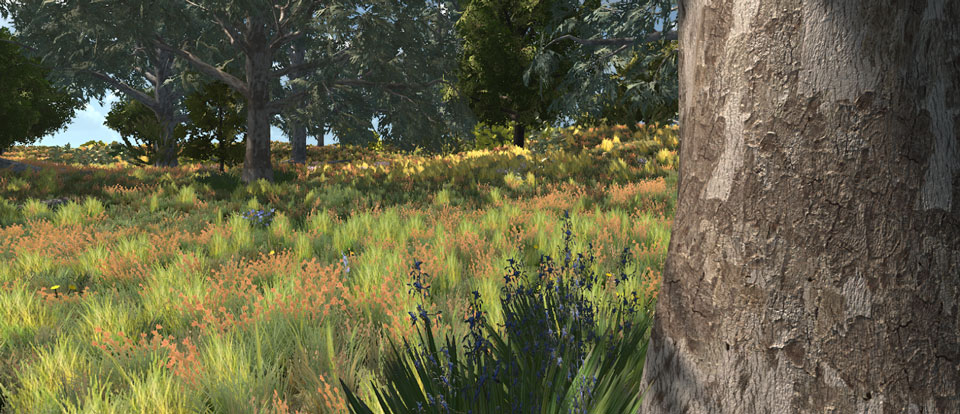
This cross disciplinary collaboration resulted in a VR experience of an Australian Box Gum Grassy Woodland landscape, an endangered eucalypt woodland ecosystem that is difficult to observe in its pre-European colonisation form. We were able to demonstrate the great potential for education, public engagement, and land management, by means of a series of workshops and user studies at the Department of the Environment and Energy, Canberra with 27 experts in environmental policy development, plant ecology, evolutionary biology, and paleoecology.
More information on the project page.
Embodied gesture interaction for immersive maps
Immersive maps in which the user is closer to the data
Example embodied interaction: Filter values by shaking the map.
Left: before shaking, the map shows all flow symbols. Center: Shaking removes flows with small values. Right: After shaking, the map only shows flows with large values.
The MADE-Axis: a modular actuated device to embody the axis of a data dimension.
Composable controller units with two actuated sliders and a rotary encoder for creating multi-dimensional visualisations in VR and AR.
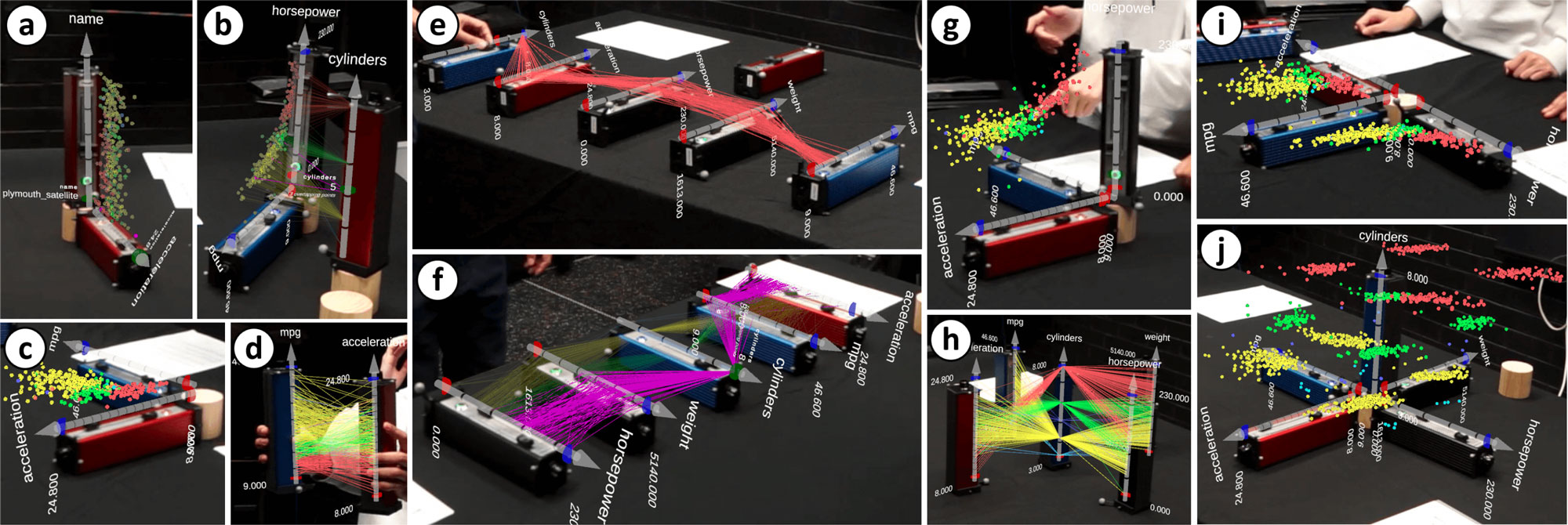
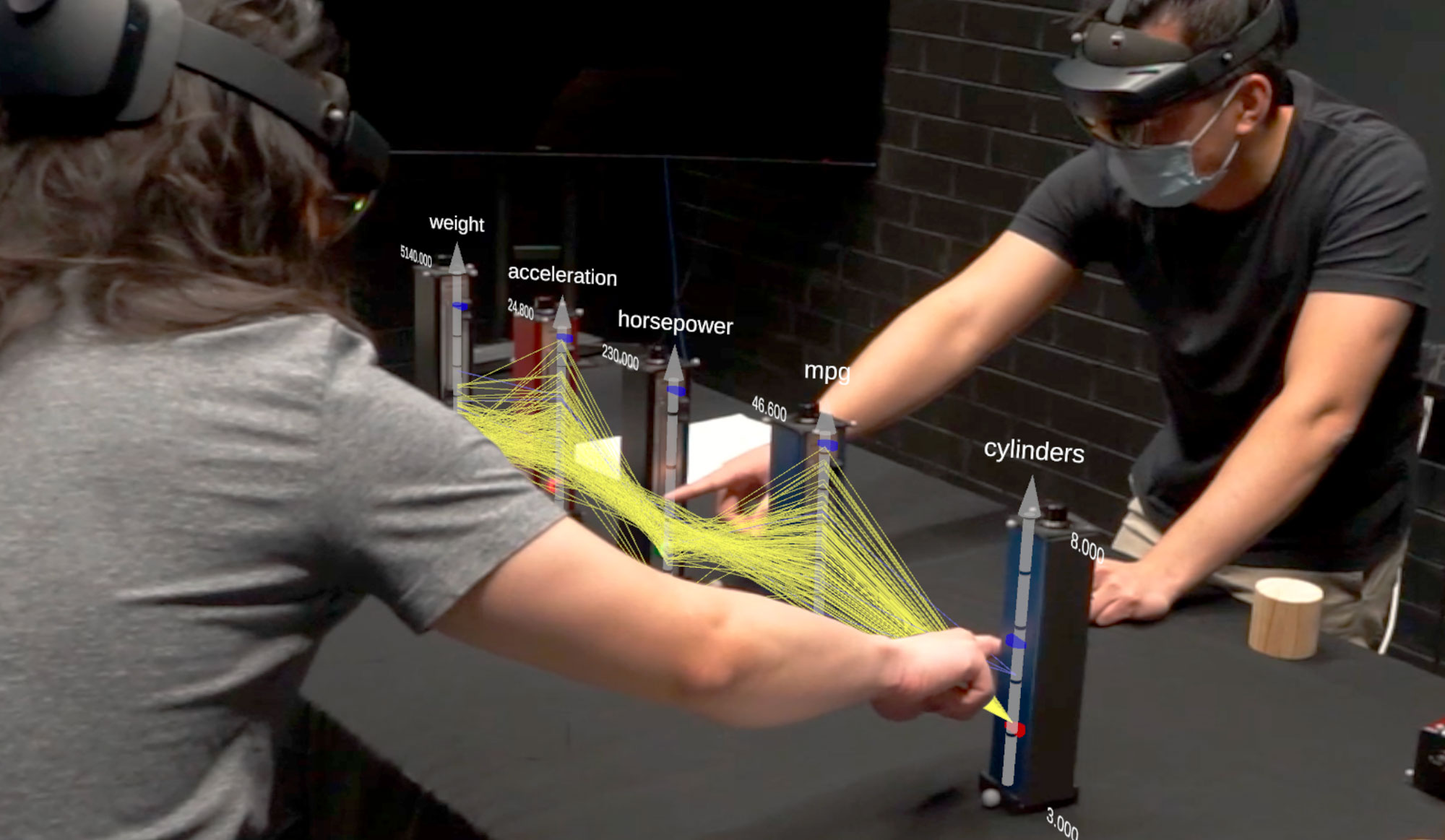
A Design Space Exploration of Worlds in Miniature
Maps Around Me: 3D Multiview Layouts in Immersive Spaces
An exploration of Immersive Multiview Maps in Virtual Reality
A spherical cap layout surrounding a large central overview. Visual links and colour hues indicate hierarchical groupings.

Layout types: planar (left), spherical cap (center) and spherical (right).
Shared surfaces and spaces: collaborative data visualisation in a co-located immersive environment
Collaborative visualisation and analysis of multidimensional data in VR with FIESTA
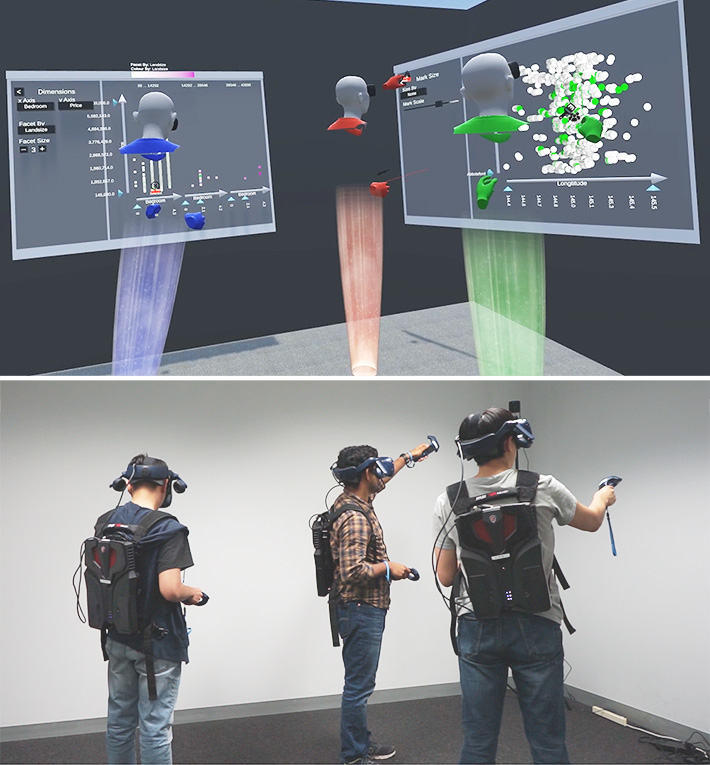
Teams of three participants collaborate on 3D scatterplots
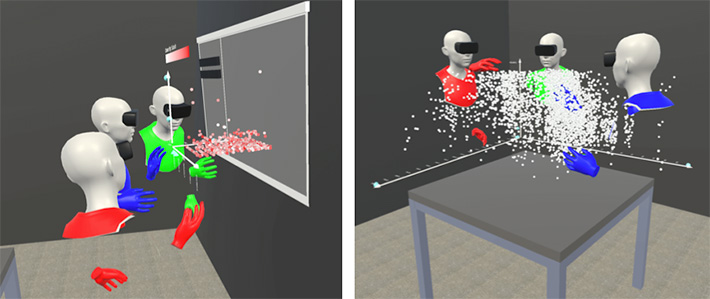
Transitions between 2D choropleth map, 3D prism map and bar chart in immersive environments
Tilt Map transitions from 2D choropleth maps to 3D prism maps to 2D bar charts

Inclination for transitioning between choropleth map, prism map and bar chart
Immersive Visualisation with Bar Graphics
Bar Charts and Maps with Bars for Immersive and Situated Visualisation
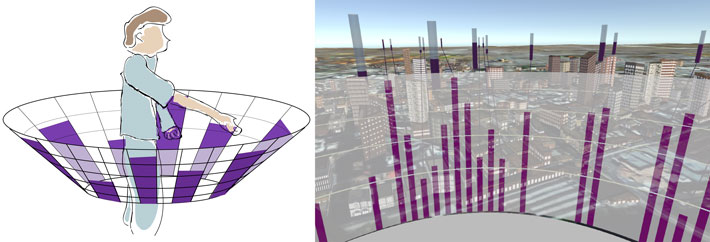
Egocentric Bar Chart
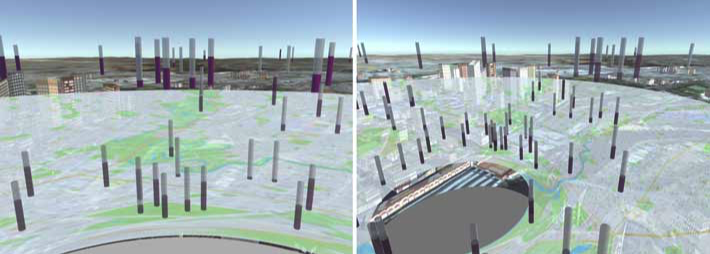
Circular Map with Bars
Gesture Interaction for Maps in Augmented Reality
Gestures for immersive maps

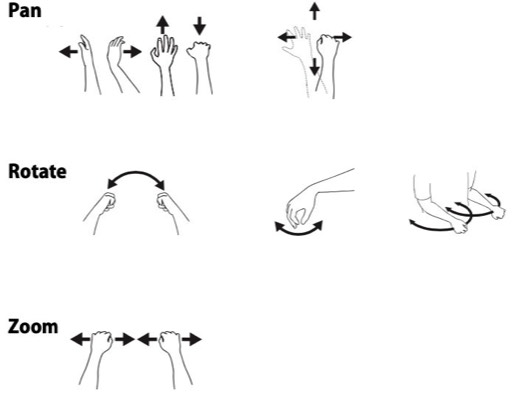
Immersive Flow Maps
Origin-Destination Flow Maps in Immersive Environments
Maps and Globes in Virtual Reality
Mapping the world in VR

2D Terrain
Ambient Occlusion for Terrain Shading
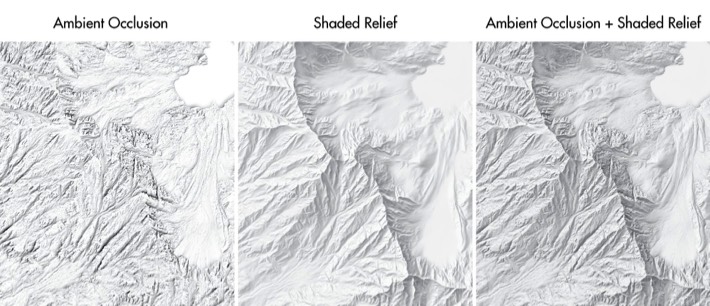
Cartographic Relief Shading with Neural Networks
Replication of hand-drawn relief shading with U-Net neural networks
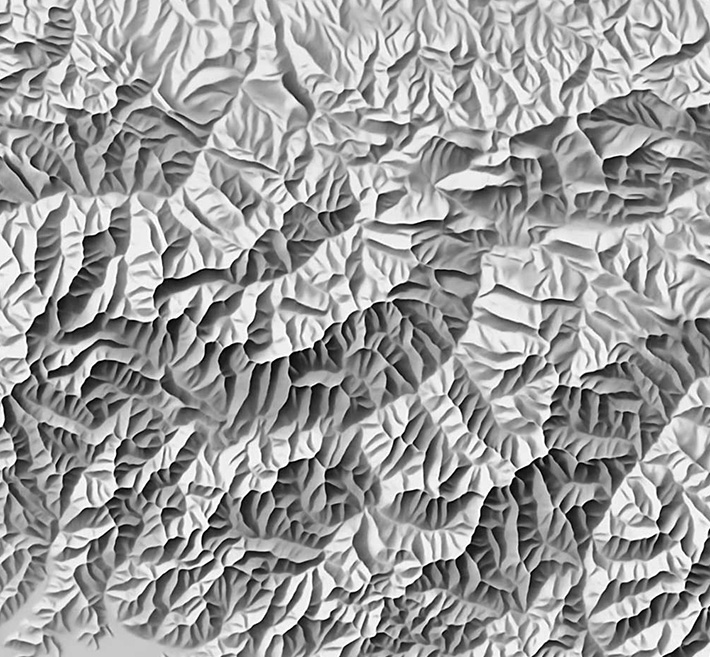
Shaded relief of the Caucasus Mountains created with a neural network trained with a manual relief shading of Switzerland.
Elevation Models for Reproducible Evaluation of Terrain Representation
Elevation models to promote, evaluate, and compare terrain representation techniques
The elevation models are best accessed at http://shadedrelief.com/SampleElevationModels/.
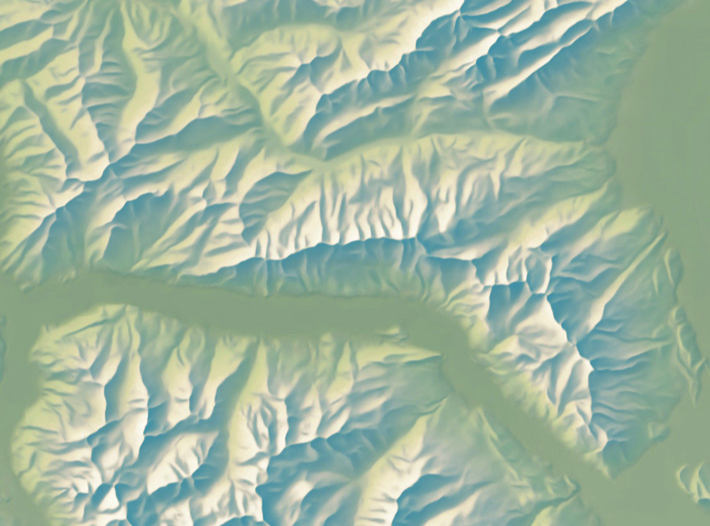
Churfirsten, Switzerland: One of the proposed elevation models.
Terrain Generalisation for Maps
Simplifying terrain to better see it
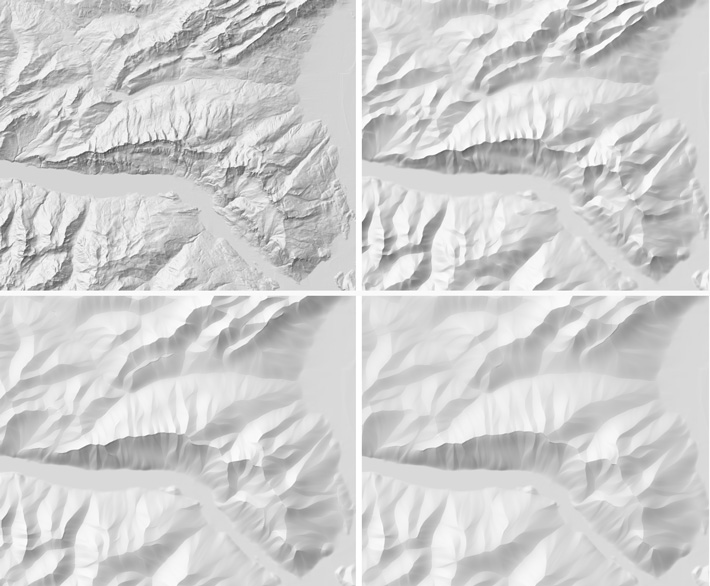
Terrain Equalizer is an application for frequency filtering of terrain models. Terrain detail can be adjusted with the viewing distance.
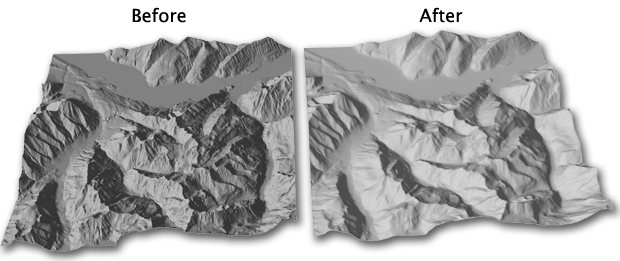
Supplementary Contour Lines
Automated creation of supplementary contours

Supplementary contour lines (dotted) and regular contour lines.
Natural-colour Maps
A hyperrealistic map style
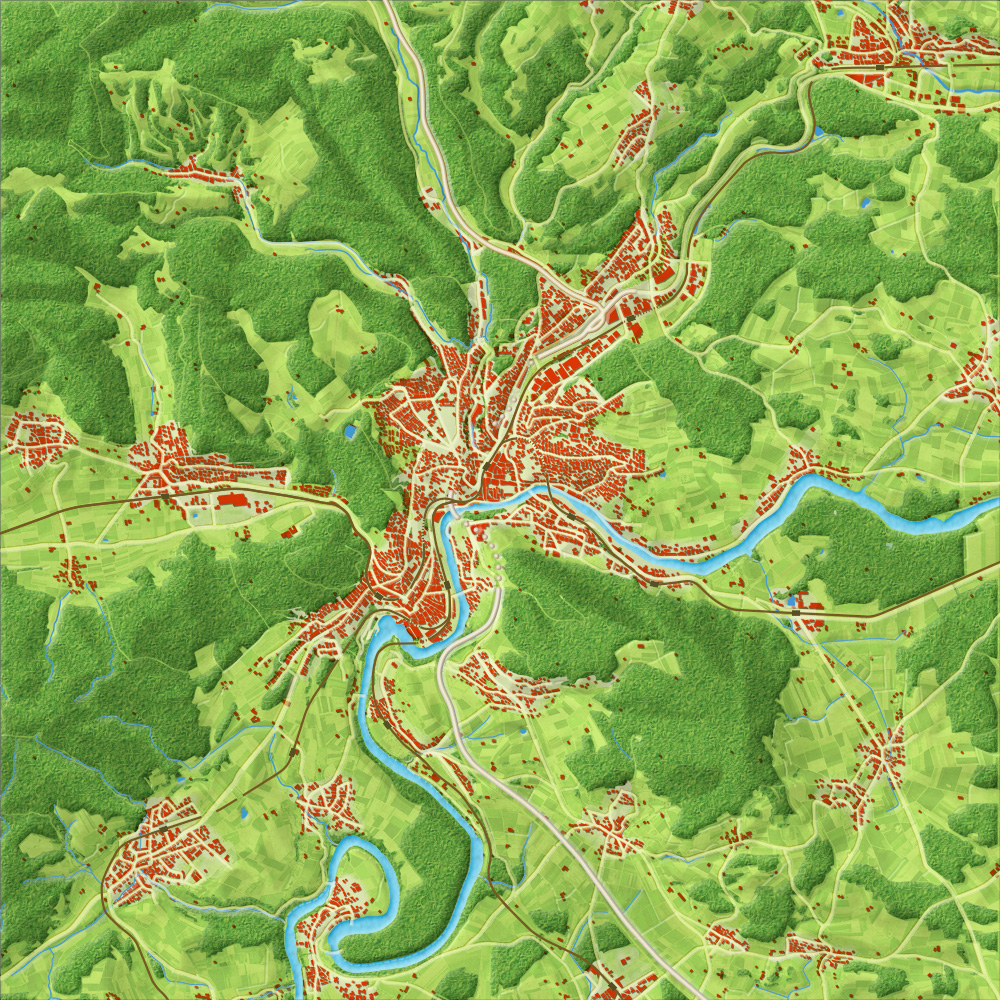
A natural-color map of Schaffhausen, Switzerland.
Coloured Relief Shading
Modulating terrain colour with exposure to illumination
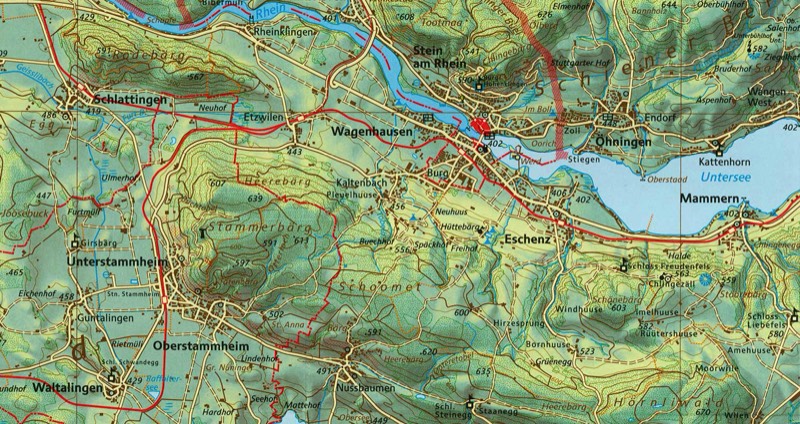
Section of the school map of Schaffhausen, Switzerland
Relief Shading
Improving the perception of terrain on 2D maps
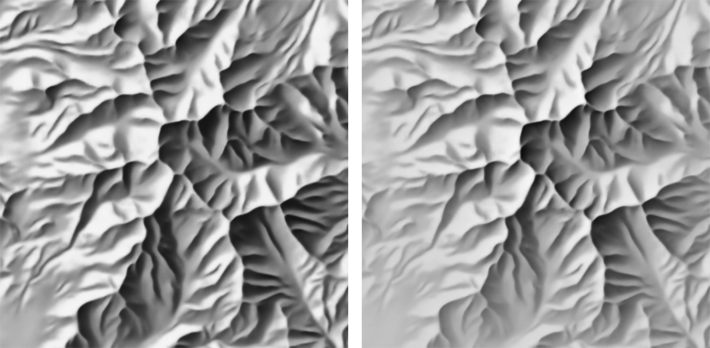
Shade relief without (left) and with (right) aerial perspective simulation.
Illuminated Contour Lines
Tanaka contours
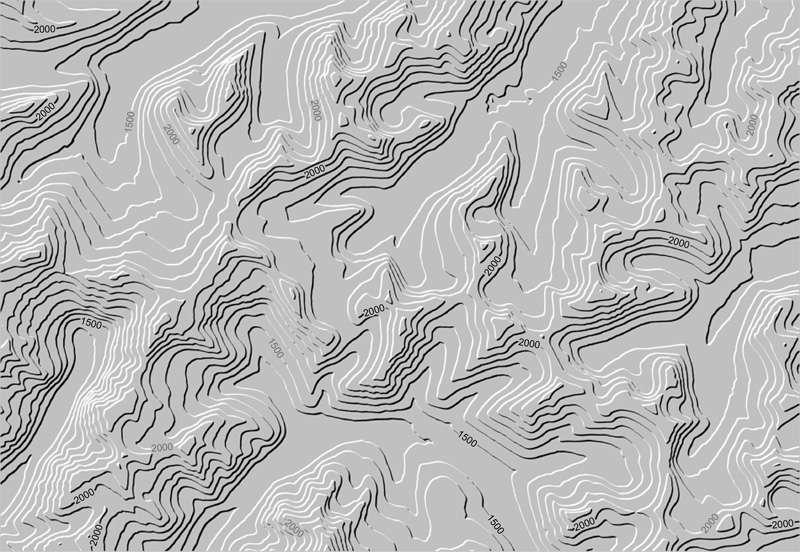
Illuminated and shadowed contour lines.
Rock and Scree Drawing
Swiss-style mountain mapping
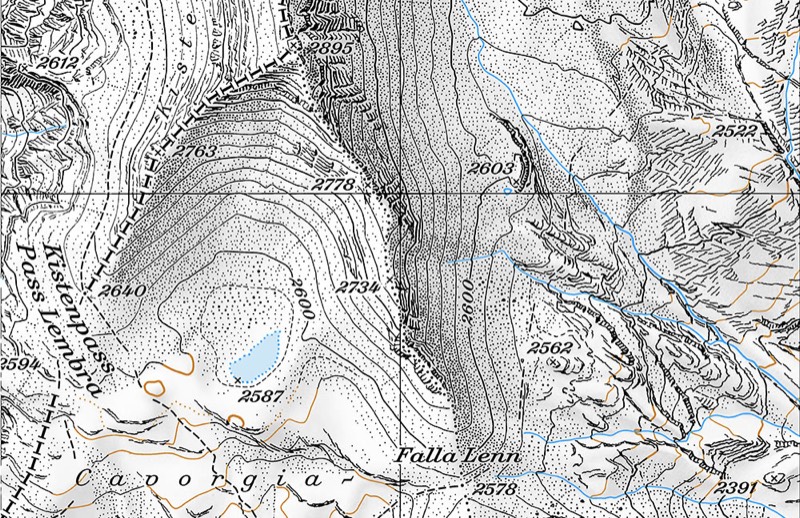
Digital scree rendering with Scree Painter (swisstopo map 1193 Tödi)
Spot Heights
Elevations of peaks, saddles and depressions on topographic maps
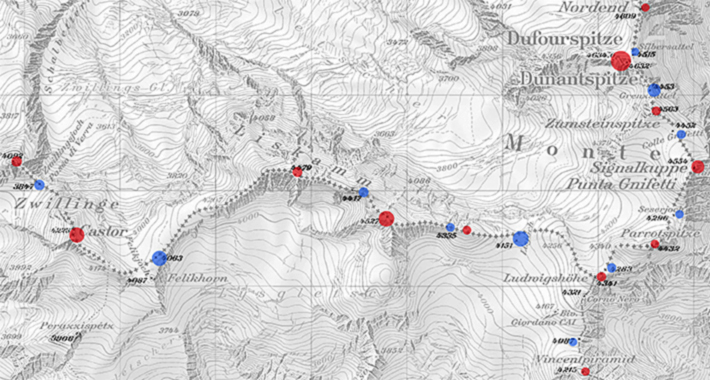
Spot heights locations selected by the proposed method; red: summits; blue: mountain passes. Circle size indicates importance values. Background: 1:50,000 map by swisstopo.
Hypsometric Tinting
Showing elevation with colour
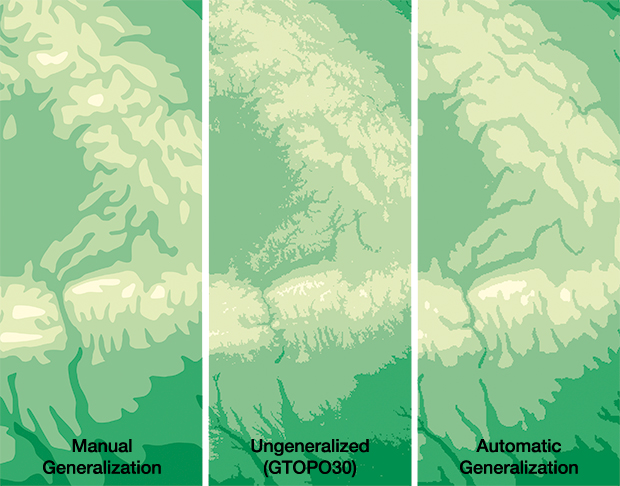
Hypsometric tinting for atlas maps.
3D Maps
Look-From Camera Control for 3D Terrain Maps
Lightweight interactive camera control techniques for 3D terrain maps
Animated Relief Shearing
Enhancing terrain perception for interactive maps

ElasticTerrain.xyz is a demo website with worldwide terrain shearing by Jonas Buddeberg.
Plan Oblique Relief
Seeing the third-dimension on flat maps
Explore the interactive Plan Oblique Europe map or the static Crinkled Watercolor Map.
Plan Oblique Europe
Map by Jonas Buddeberg, FOSS4G Map Gallery Most Unique Map Award 2014, FOSS4G People’s Choice Award 2014, NACIS Student Dynamic Map Competition.
3D Natural Hazard Maps
Communicating natural hazards with 3D maps
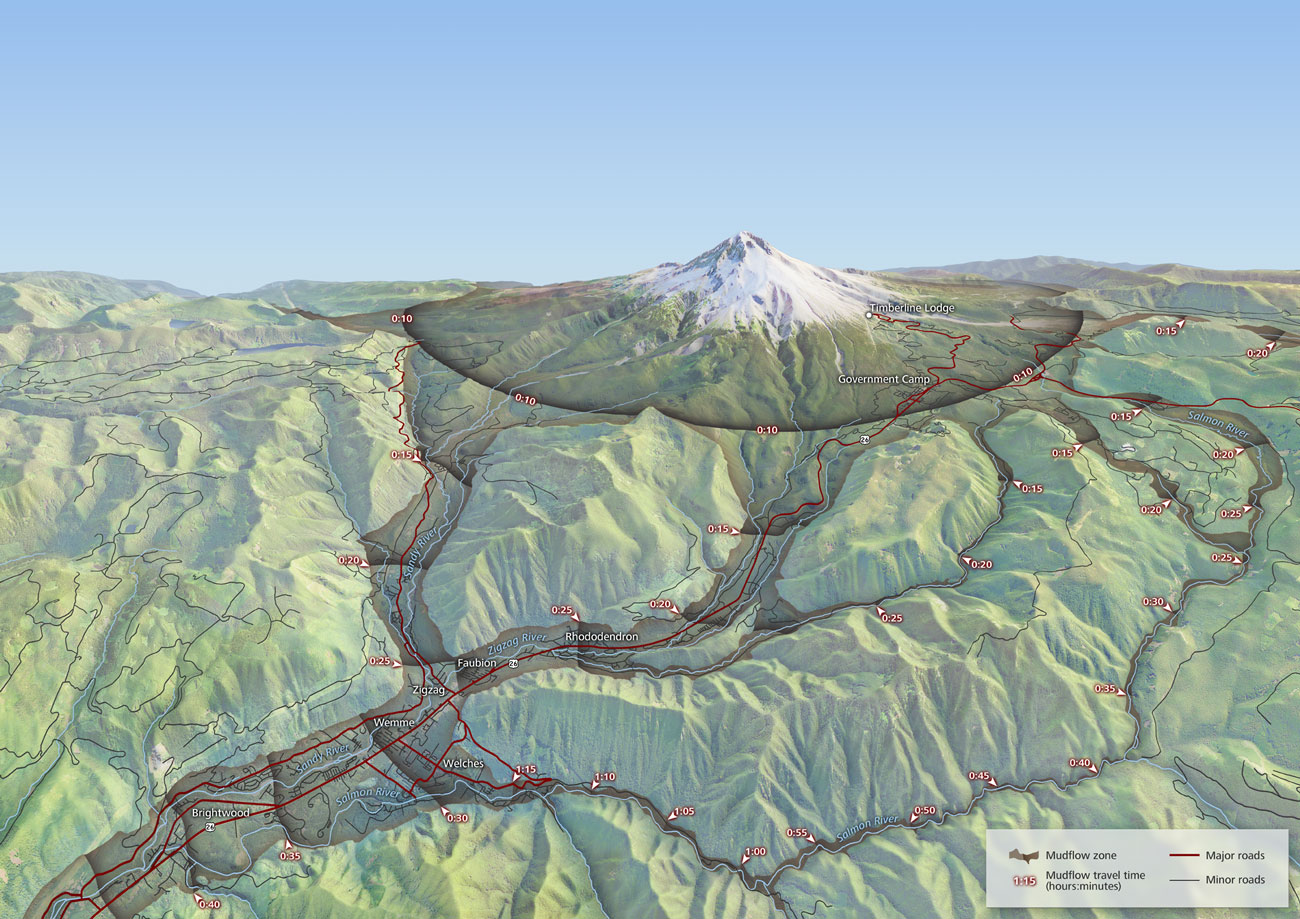
Lahar hazard zones and arrival times for Mt Hood, Oregon.
Map by Charles Preppernau, National Geographic Award in Mapping 2015, CaGIS Map Design Competition.
Projections for 3D Maps
Manipulating terrain to increase its readability
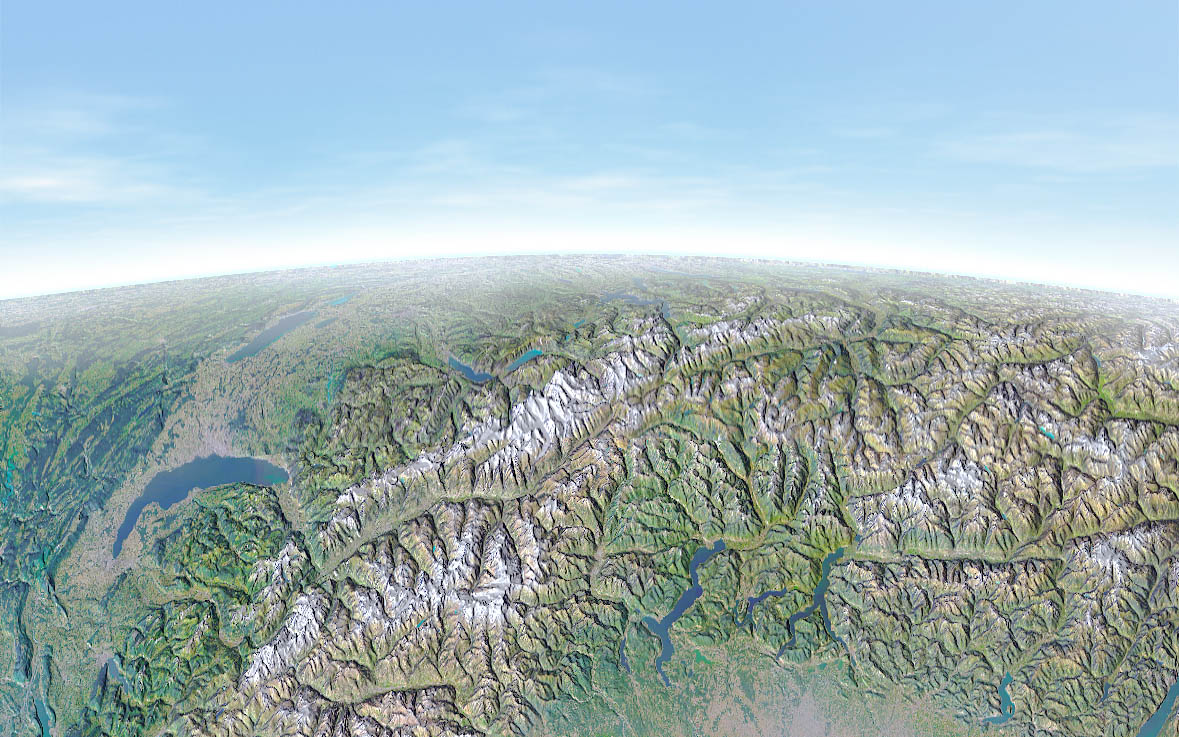
Map with progressive projection created with Terrain Bender
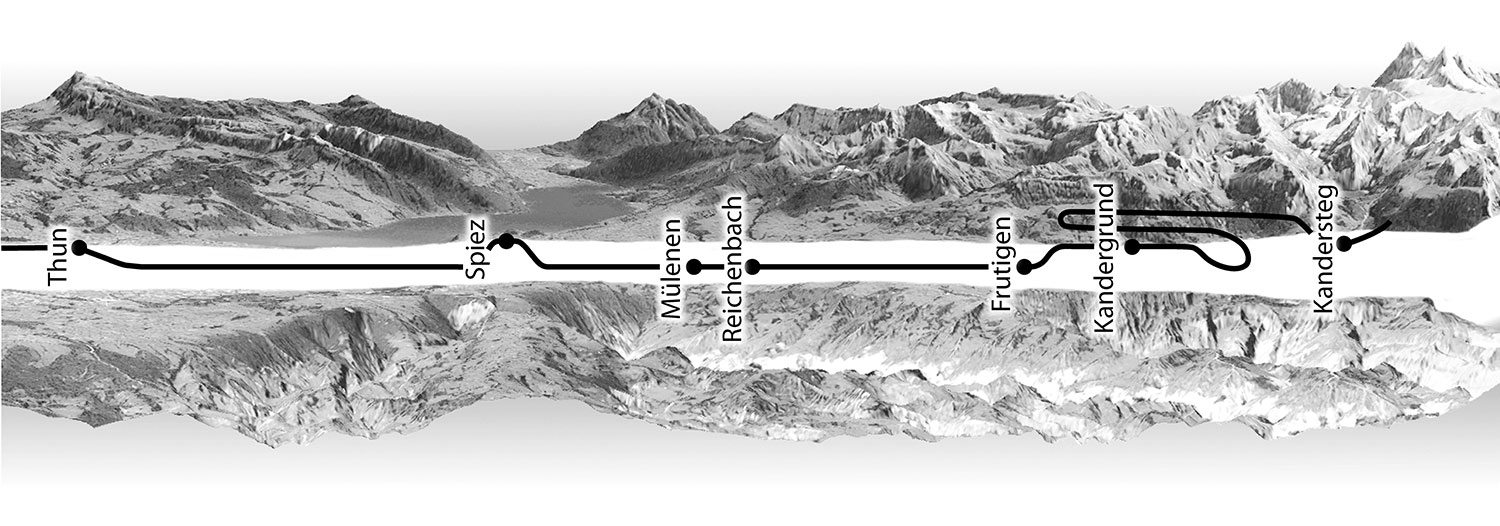
Strip format panorama map along a train track. The train track was rectified to a straight line along the central axis.
Map Design
Quantitative Data Visualisation on Virtual Globes
Video Maps
Extending web maps with video layers
A Year in the Life of Earth's CO₂, an interactive video map that visualises a high-resolution NASA computer model of global atmospheric carbon dioxide distribution.
Flow Maps
Design principles and algorithms for origin-destination flow maps
Migration in the United States, 2009–2013, an interactive flow map of migration in the United States using a force-directed layout. Map by Daniel Stephen.
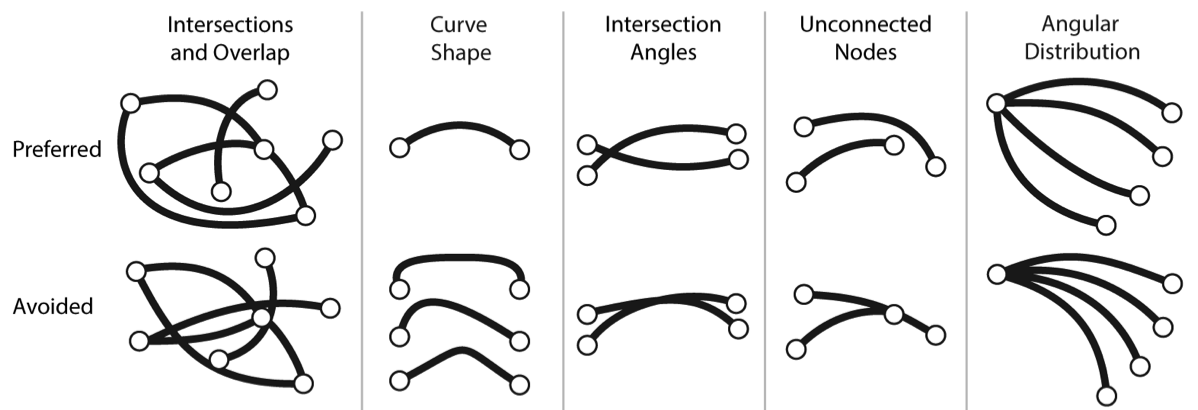
Preferred and avoided arrangements of flows, from Design principles for origin-destination flow maps.
Color Oracle
Design for colour-deficient vision
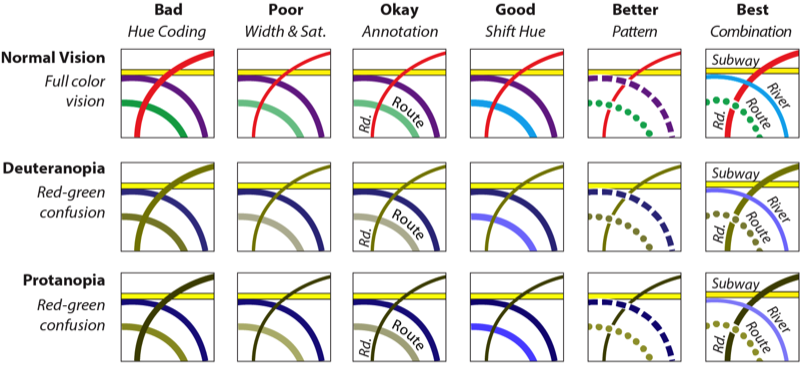
Automatic Legends for Proportional Symbol Maps
Rotate your device to landscape orientation to see the legend.
Dot Maps
Graduated dot maps: a new mapping technique
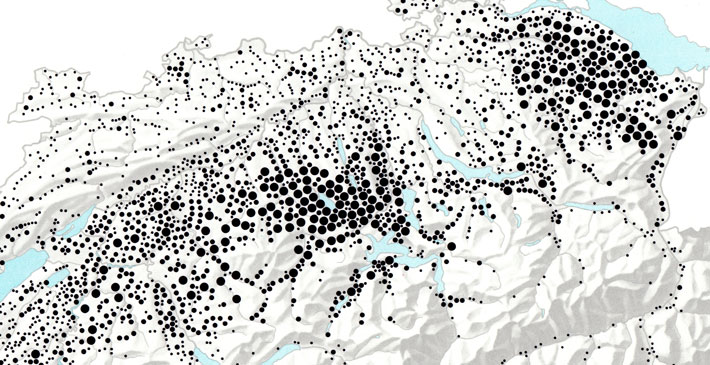
Graduated dot map with three dot sizes. ©Atlas of Switzerland, sheet 51, 1977.
Altases for E-books
Map design for tablet computers
CaGIS David Woodward Award for Best Electronic Map 2016
International Map Industry Association IMIA: Best Student Electronic Map 2015
NACIS Student Dynamic Map Competition 2015
New Mapmaker Award by the British Cartographic Society and ESRI UK 2015
British Cartographic Society and National Geographic Society New Mapmaker Award 2014
CaGIS Best of Show 2014
CaGIS David Woodward Award for Best Electronic Map 2014
NACIS Student Dynamic Map Competition 2014
Game Devices
Navigating geovisualisation with gamepads

Map Projections
Equal Earth Map Projection
A projection for world maps that does not distort area
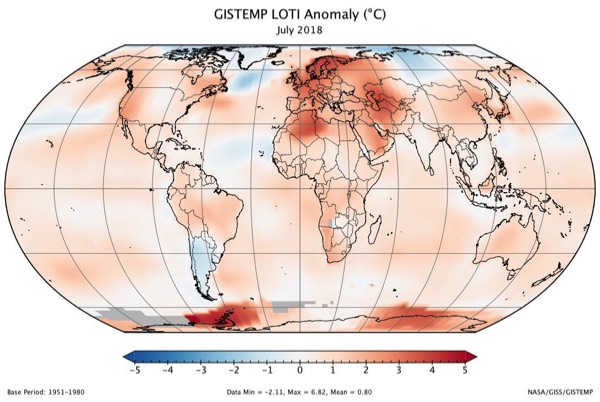
NASA temperature anomalies map with the Equal Earth projection
Adaptive Composite Map Projections
A replacement for the web Mercator projection
Selecting Map Projections
Projection Wizard for choosing the best projection
Flex Projector
Designing custom map projections
New Map Projections for World Maps
Balancing between areal and angular distortion
Natural Earth I
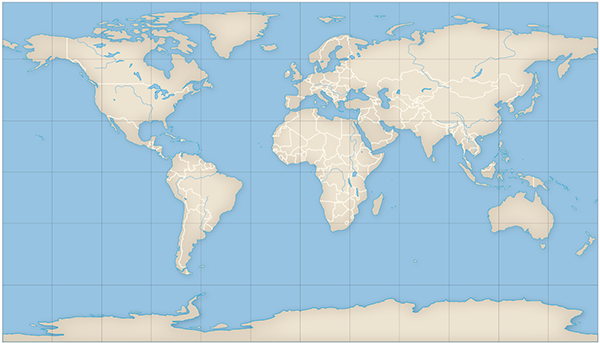
Patterson cylindrical
In 1989, Herbert Hufnagel introduced a generalization of the Mollweide projection, resulting in a family of pseudocylindrical equal-area projections. The Mollweide, Eckert Ⅳ and Wagner Ⅳ projections are members of this family. Explore Hufnagel’s projection with this interactive tool at https://bojansavric.projectionwizard.org/Hufnagel.html
Distortion Analysis
MapAnalyst
Analysing distortion patterns in old and schematic maps
MapAnalyst was reviewed in the journal Cartographica and was judged "a great piece of software for analysing old maps, and one would expect MapAnalyst to be a welcome addition to the desktops of map researchers everywhere". MapAnalyst has been used by several map historians for the study of old maps.
Cartographic Heritage
Geometryic analysis for the history of cartography
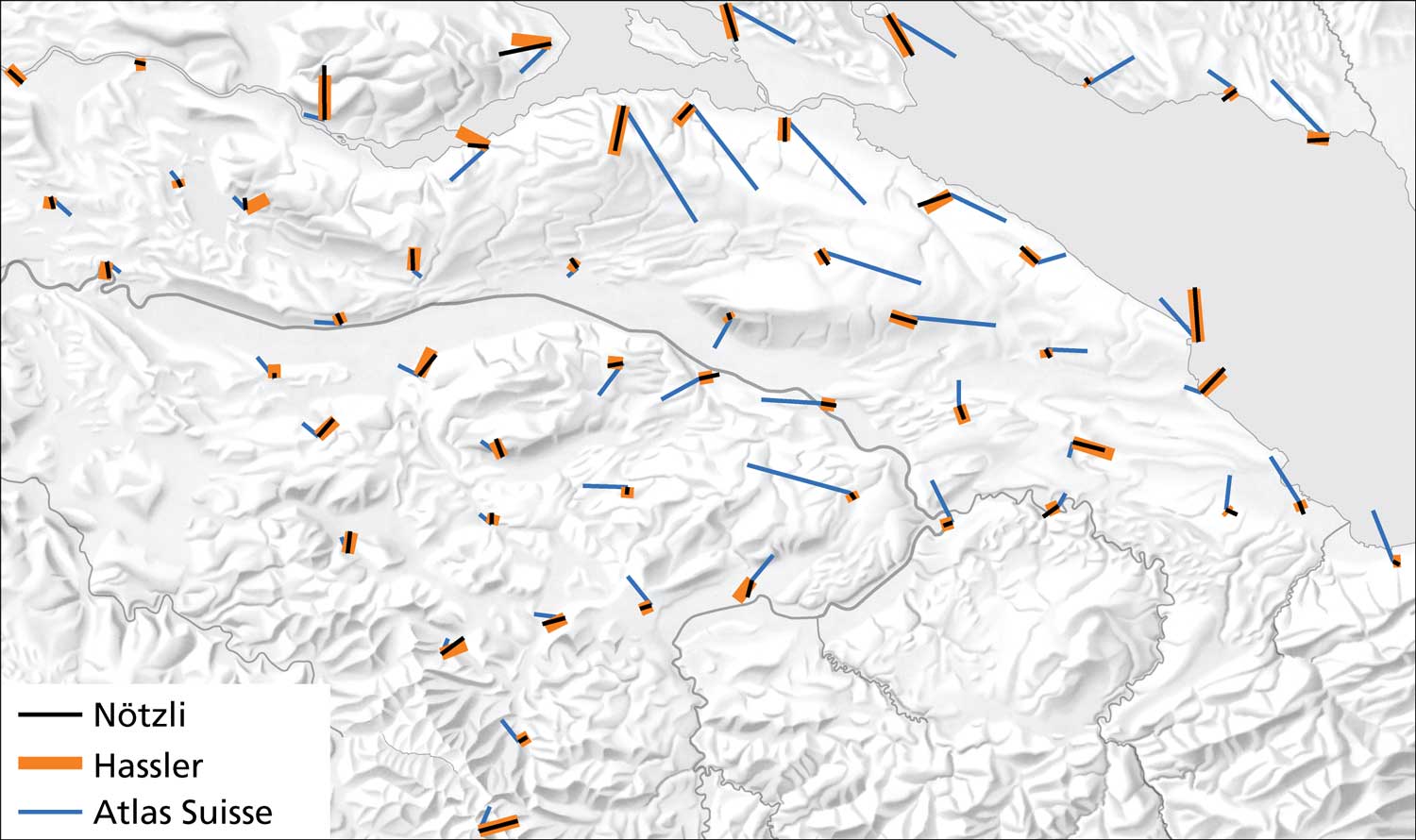
Orange is a copy of black, but not blue: The displacement vectors of the Hassler and Nötzli maps coincide, the vectors of the Atlas Suisse are spatially unrelated. Analysis and visualisation with MapAnalyst (Data courtesy of Dr. Martin Rickenbacher, Federal Office of Topography swisstopo).
Software
Globes for the Apple Vision Pro shows highlights from Stanford's David Rumsey Map Center right in your home.
Eduard creates beautiful shaded relief image from elevation models.
Flox creates origin-destination flow maps.
Color Oracle simulates colour-deficient vision.
FlexProjector creates custom map projections.
MapAnalyst visualises the geometric accuracy of old maps.
Pyramid Shader, Terrain Sculptor and other software to visualise terrain.
Scree Painter visualises scree on mountain maps.








